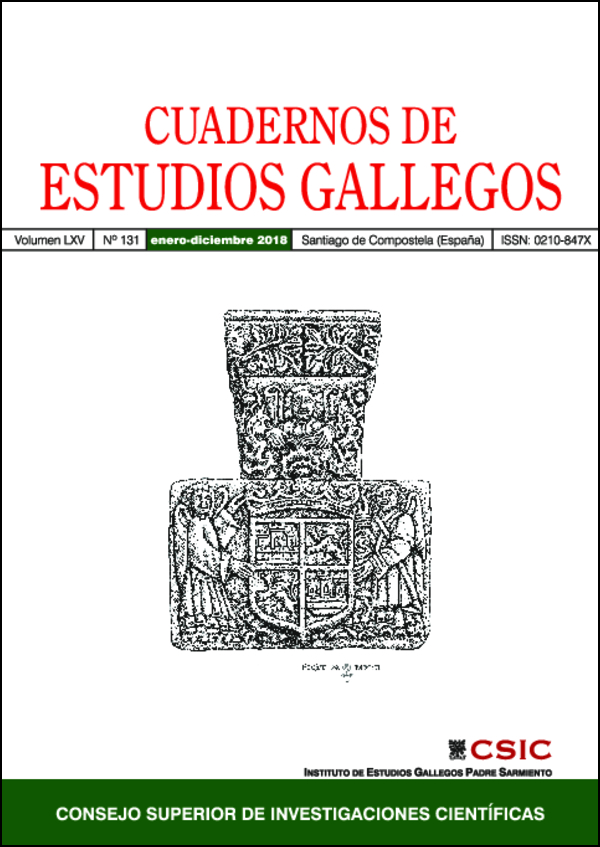The Evolution of Urban Consumption Scenarios. The Case of San Andrés Street in The City of A Coruña
DOI:
https://doi.org/10.3989/ceg.2018.131.11Keywords:
urban history, urban marketing, consumption, iconography, identityAbstract
This research study explores the backdrops of the contemporary city by reviewing the relationship between the urban identities and the most representative iconography elements of such places. The social identity assumed by individuals is produced by forces beyond the complex web of interactions which take place within a given cultural context. Since the emergence of the nineteenth-century urban planning, modern cities have been reshaped according to the territorial needs that arose from the economic activities led by the industrial and commercial bourgeoisie. The developments in international markets along with the relocation of most part of the industry and the cultural patterns embedded into the production of goods in advanced capitalist societies have driven the global phenomenon of corporate brands. Competing with each other to attract investors, citizens and tourists, the cities, which have turned into a commodity, have redesigned their own identities by resorting to the brand-fetish.
Downloads
References
Baudrillard, Jean, Cultura y simulacro, Barcelona, Editorial Kairós, 1978.
Bermúdez, Guillermo, La franquicia: elementos, relaciones y estrategias, Madrid, Editorial ESIC, 2002.
Bryman, Alan, The Disneyization of Society, London, Sage Publications, 2004. PMCid:PMC3455230
Castells, Manuel, La ciudad y las masas, Madrid, Editorial Alianza, 1986.
Debord, Guy, La sociedad del espectáculo, Valencia, Editorial Pre-Textos, 2012, [ed. original: 1967].
Fernández, Carlos, 100 años del comercio coruñés: de los mercados a Marineda City, Coruña, Invest Cos, 2011.
Iglesias, Vicente, La Calle de San Andrés, A Coruña, Ediciones Arenas, 2014.
Lamela, Carmen, “O urbanita galego: construcción e mantemento das redes sociais e do capital social”, en Rubén Lois y Daniel Pino (coords.), A Galicia urbana, Vigo, Edicións Xerais, 2015, págs. 413-427.
Litvak, Lily, España 1900: modernismo, anarquismo y fin de siglo, Barcelona, Editorial Anthropos, 1990.
Logan, John & Molotch, Harvey, Urban fortunes: the political economy of place, Berkeley, University of California, 1987.
Madrid, Francisco, La prensa anarquista y anarcosindicalista en España desde la 1ª internacional hasta el final de la guerra civil, Barcelona, Facultad de Geografía e Historia de la Universidad Central de Barcelona, 1989, [tesis doctoral en línea], disponible en [Consulta: 25/08/2016].
Martínez I Muntada, Ricard, “Movimiento vecinal, antifranquismo y anticapitalismo”, Historia, trabajo y sociedad, núm. 2 (2011), págs. 63-90.
Mirás, Jesús, Continuidad y cambio en la España urbana en el período de entreguerras: análisis de una ciudad española, Oleiros, Netbiblo, 2007.
Mirás, Jesús, “Crecimiento urbano y transformaciones en la localización de la actividad económica en A Coruña, 1914-1935”, Scripta Nova. Revista Electrónica de Geografía y Ciencias sociales, Barcelona, Universidad de Barcelona, vol. XI, núm. 252 (2007), págs. 229-255.
Panofsky, Erwin, Estudios sobre iconología, Madrid, Editorial Alianza, 1985.
Rodríguez, Nuria, La capital de un sueño: Madrid en el primer tercio del siglo XX, Madrid, Asociación de historia contemporánea, 2015.
Sánchez, Xosé Manuel, “Los primeros 300 años de A Coruña”, en A Coruña, 1208-2008: a construción dunha cidade, A Coruña, Sociedad Estatal de Conmemoraciones Culturales, 2008.
Soraluce, José Ramón, “A Coruña: arquitectura desaparecida. Los espacios del ocio”, en Fernando Agrasar (coord.), A Coruña: arquitectura desaparecida, A Coruña, Colegio Oficial de Arquitectos de Galicia, 2004, págs. 149-175.
Sueiro, Susana, Posguerra: Propaganda y publicidad en España (1939-1959), Madrid, Ediciones Círculo de Bellas Artes, 2007.
Tomé, Sergio, “Comercio y ciudades medias en la España del desarrollismo”, Biblio 3W. Revista Bibliográfica de Geografía y Ciencias Sociales, vol. XVII, núm. 1003 (2012), [en línea], disponible en <http://www.ub.es/geocrit/b3w-1003.htm> [Consulta: 25/08/2016].
Vigo Trasancos, Alfredo, A Coruña y el siglo de las luces: la construcción de una ciudad de comercio (1700-1808), Santiago de Compostela, Universidad de Santiago de Compostela, 2007.
Vigo Trasancos, Alfredo, “A Coruña. Historia e imagen de un puerto atlántico (s. I-1936)”, en María del Mar Lozano Bartolozzi (coord.), Patrimonio cultural vinculado con el agua: paisaje, urbanismo, arte, ingeniería y turismo, Editora Regional de Extremadura, 2014, págs. 381-394.
Villasuso, Lucía, “Plazas de toros, circos y otras construcciones efímeras de planta centralizada instaladas en A Coruña entre 1850 y 1950”, Anuario brigantino, núm. 36 (2013), págs. 385-410.
Zukin, Sharon, The Cultures of Cities, Oxford, Blackwell Publishers, 1996.
Downloads
Published
How to Cite
Issue
Section
License
Copyright (c) 2018 Consejo Superior de Investigaciones Científicas (CSIC)

This work is licensed under a Creative Commons Attribution 4.0 International License.
© CSIC. Manuscripts published in both the print and online versions of this journal are the property of the Consejo Superior de Investigaciones Científicas, and quoting this source is a requirement for any partial or full reproduction.
All contents of this electronic edition, except where otherwise noted, are distributed under a Creative Commons Attribution 4.0 International (CC BY 4.0) licence. You may read the basic information and the legal text of the licence. The indication of the CC BY 4.0 licence must be expressly stated in this way when necessary.
Self-archiving in repositories, personal webpages or similar, of any version other than the final version of the work produced by the publisher, is not allowed.















